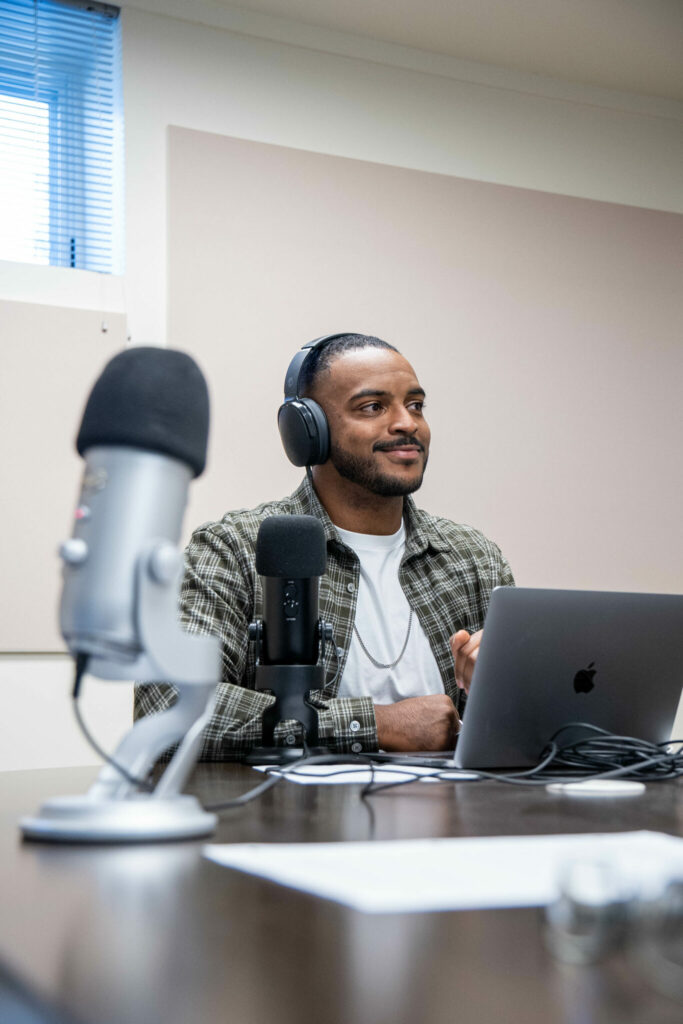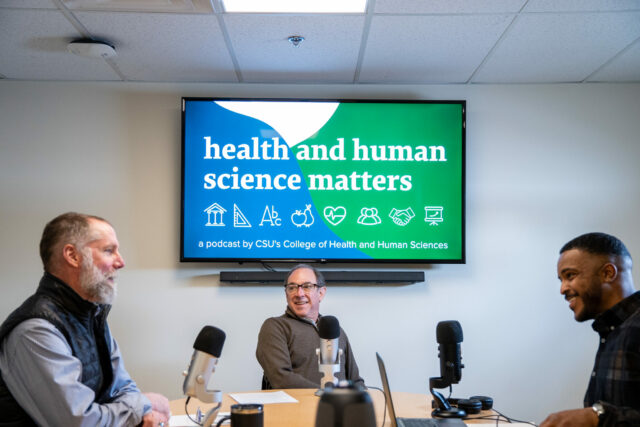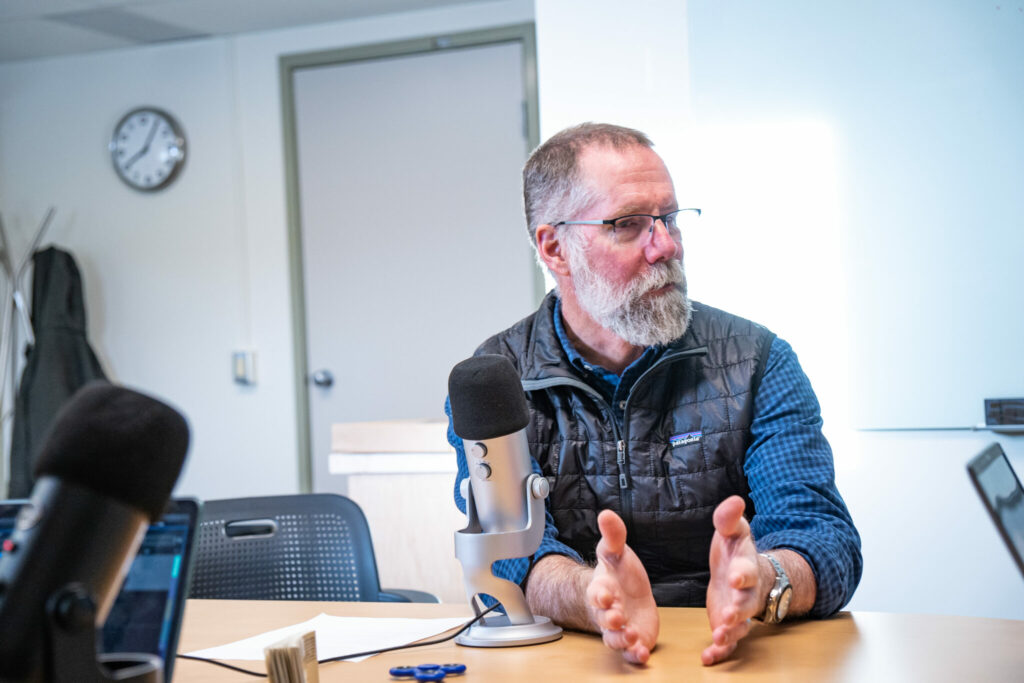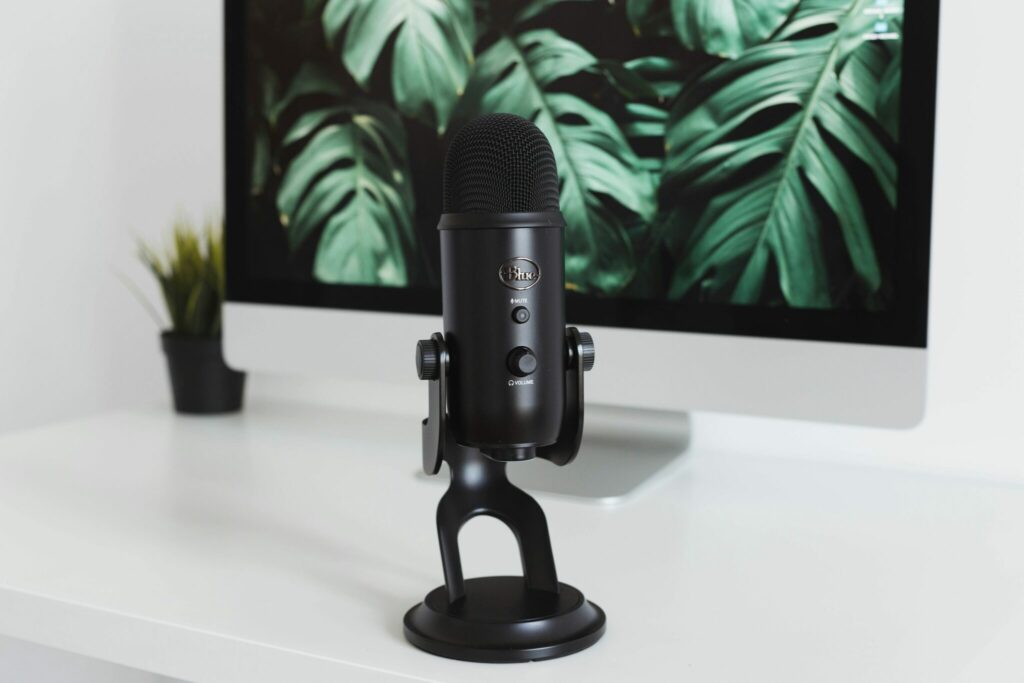Podcasts. Everyone has at least one they love, and it seems like new podcasts pop up each day, sometimes each hour.
That’s an unofficial stat, but it’s probably not too far off-base.
The reason for the recent resurgence of podcasts is because of its medium. For those able, on-demand audio is a quick, easy-to-consume form of education and entertainment. Your undivided attention isn’t needed, yet you can be transported to new landscapes sonically and narratively while on the road, washing your dishes, or on a run.
With our podcast Health and Human Science Matters, Associate Dean for Research and Graduate Studies Matt Hickey and I co-host and share the stories of our College of Health and Human Sciences researchers, the problems they solve, and who they are as both scientists and humans. Throughout producing five seasons of the show, I’ve learned some key lessons that you’re welcome to add to your toolbox.
Lay the foundation

Assuming you already have the idea and format for your podcast (here are the top podcast formats in the U.S. according to the PEW Research Center), it’s time to get your equipment and set up an RSS feed. RSS stands for Really Simple Syndication and is the way to get your podcast on platforms like Spotify and Apple – here’s more on how RSS feeds work and how to create an RSS feed for your podcast.
For equipment, you can go as high- or low-budget as you’d like on microphones; you can even create a podcast directly from your phone, though I don’t recommend that. We use USB mics, a multi-port USB hub, and Adobe Audition recording onto my laptop. We also reserve a quiet space with good acoustics.
Create consistency
In university communications, no one wears only one hat. I may be a podcaster every other Friday, but on the days between, I am also a designer, photographer, and copyeditor, often on the same day. This is the blessing of being a multimedia creator like many of my peers (shout out to CSU’s Department of Journalism and Media Communication for preparing me for this career).
Because of the many demands on our time, it’s good to establish a schedule for yourself that you can realistically stick to. We release our podcast bi-weekly on Fridays throughout the year, taking a break between semesters. Your release schedule should be determined by the time you’re able to dedicate to recording and editing. Speaking of which; if you record an hour of audio, expect to edit for at least four hours uninterrupted. This amount of time can vary depending on your skill level, editing speed, and additional sound design.
I will also note that releasing episodes in a batch – for example, all ten episodes in one season – is more time consuming than a weekly or bi-weekly structure, and much more difficult to promote, as I’ll speak to below.
Find your promotional strategy

A podcast is only as good as its marketing. There are plenty of incredible stories that go unheard because they aren’t promoted properly.
Despite the auditory nature of podcasts, it’s important to have accompanying visuals of some kind to promote your product on social media. The episodes in our first two seasons of Health and Human Science Matters had low listenership because they were released in a batch, not promoted individually, and they didn’t have any accompanying visuals beyond graphics.
After learning these lessons, we reconfigured how we released our episodes, switching to the bi-weekly schedule. Our digital media coordinator, Ashur Lockrem, took photos of the guests during the interviews and we invited them to provide their own photos to share on our social media channels. This resulted in high-quality content for social media, higher listenership on our episodes, and an opportunity to show another side of our guests.
Review, revise, repeat

Be sure to build time into your schedule to have some trusted editors take a listen before your release – and give yourself grace and time to make some final changes. When you’re immersed in the sound waves, it gradually becomes more difficult to notice errors, especially if you are focused on one specific flaw over another. For example, I may be so locked in on removing each “um” someone says that I completely forget about sound quality. Or conversely, I could focus solely on removing background noise and fail to catch a guest’s hiccup.
It would be ten times worse to release an episode to the public with an error that could be fixed with a simple edit. I have the privilege to be a part of an incredible team in Health and Human Sciences, and to have a few extra pairs of ears to provide feedback. If you don’t have an editorial team, find a peer who is willing to provide some quick feedback – I’ll be that peer for you.
I hope you have found these tips helpful as you refine or explore your own podcast potential. When you add Health and Human Science Matters to your library, be sure to add these incredible CSU shows as well:
- The AgNext Podcast
- Applied by CSU’s Office of Engagement and Extension
- Colorado State Insider
- CSU’s The Audit
- CSU Spur of the Moment
- Living Healthy Longer
- Tune into Nature by CSU’s Warner College of Natural Resources
